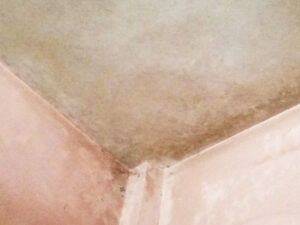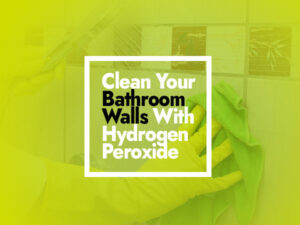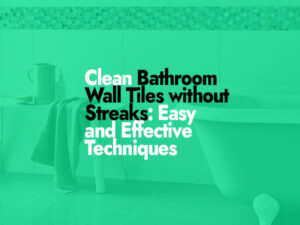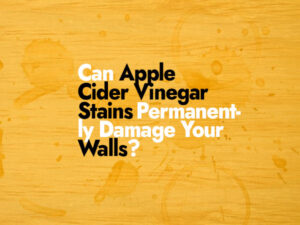How are you? So, you want to get rid of those pesky algae spots on the walls of your pool, huh? So, you’re in the right place. Algae can be a real pain, but if you know what you’re doing and put in a little work, you’ll soon have a pool that looks as clear as glass.
Algae stains are not only ugly, but they can also cause bacteria and other nasty things to grow in your pool. That’s why it’s important to deal with the problem quickly and well. There are some tried-and-true ways to get rid of those tough algae stains and get your pool back to its original state.
In this guide, I’ll show you step-by-step how to remove algae spots from the walls of your pool. We’ll talk about everything, from the tools and materials you’ll need to the best ways to get rid of those pesky green spots. By the end, you’ll know how to keep your pool clean and have the confidence to do it. Then you can enjoy a cool swim all summer long.
So let’s jump in together and get rid of those algae spots, shall we?
Why Do Algae Spots Form on the Walls of Pools?
Most of the time, algae spots on pool walls are caused by algae growing and collecting in the pool water. Algae are single-celled creatures that grow well in wet places, like swimming pools. There are several things that can cause algae spots on the walls of a pool.
One of the major causes is that the pool isn’t kept up well and the water doesn’t move around enough. When the pool’s chemicals and pH levels aren’t right, algae can grow. Algae can grow and stick to the walls if there isn’t enough chlorine to kill them and keep them from spreading.
Another reason is that the pool doesn’t have good filtration or circulation. If the pool’s filtration system isn’t working well or the water isn’t being moved around enough, algae can grow in still places. This makes it easy for algae to grow on the walls and leave stains that are hard to get rid of.
Algae can also grow because of things in the surroundings, like sunlight and dead plants. Algae need energy from the sun to grow, and organic matter like leaves, dirt, and other trash gives them the food they need to spread quickly.
Lastly, phosphates in the water of the pool can help algae grow. Algae need phosphates, which are nutrients, to grow. If there are a lot of phosphates in the water, it can make algae stains on the walls.
By knowing what causes algae spots, pool owners can take steps to stop them from happening and keep their pools clean and algae-free.
How to Get Rid of Algae Stains on Pool Walls
Algae stains on pool walls may seem like a hard job, but if you take the right steps, you can do it quickly. Here’s a step-by-step plan to help you get rid of those ugly green marks and make your pool walls look like they did when they were new:

Step 1: Collect the things you need
Before you start cleaning, you need to make sure you have all the tools you need. You’ll need a pool brush, an algae-specific pool cleaner, a telescopic pole, safety goggles, gloves, and a line with a high-pressure nozzle. Having a pool cleaner or skimmer can also help get rid of small pieces of trash in the pool.
Step 2: Get the Pool Ready
Before you can get rid of the algae spots, you have to get the pool ready. To stop the algae from growing, turn off the pool’s pump and filtration system. Then, use a skimmer or pool vacuum to get rid of any big pieces of trash or leaves that are on the top. Adjusting the pH and chlorine levels of the pool is also a good idea to make it easier to clean.
Step 3: Brush the Walls of the Pool
Scrub the algae-covered parts of the walls well with a pool brush. Start at the top and work your way down, pressing hard on the algae as you go. Make sure to cover everything that needs to be covered, even corners and cracks. This step breaks the algae down and gets the surface ready for the cleaning solution.
Step 4: Use a pool cleaner made just for algae
Choose a pool cleaner that is made to get rid of algae. Follow the directions on the bottle and mix the cleaner with a bucket of water. Then, directly apply the cleaning solution to the algae spots on the pool walls with a brush or sponge. Let the cleaner sit for the time it says to, which is usually between 15 and 20 minutes, so it can break down the algae.
Step 5: Scrub it again and wash it
After the cleaning solution has had a chance to do its thing, take your pool brush again and scrub the walls hard. Pay attention to where the spots were most obvious. This second round of scrubbing helps loosen any algae that is still stuck and make sure that everything is clean. Once you’re done scrubbing the walls, use a hose with a high-pressure nozzle to give them a good rinsing. Point the water down to flush the algae away.
Step 6: Clean the pool or skim it
Even after cleaning, there might still be some loose dirt floating in the water. Use a pool cleaner or skimmer to get rid of any algae or trash that is still in the pool. Pay close attention to the spots with the most algae stains. This step will help stop the algae from sticking to the walls again or spreading.
Step 7: Use the filtering system
Turn on the pool pump and filter system now that the cleaning is done. Let the device run for a few hours or all night to move the water around and filter it. This will help get rid of any algae that are still there and keep the pool clean and clear.
Step 8: Maintenance and prevention on a regular basis
To keep algae from growing in your pool, it’s important to keep the water pH right and clean it often. Test the water often and change the amounts of chemicals as needed. Also, make sure to clean the walls and surfaces of the pool regularly to keep algae from growing back.
Are Spots from Algae Bad for Swimmers?
Algae spots on pool walls may not look good, but they are usually not dangerous for swimmers. Most of the time, the stains are caused by algae growth, which can be a sign of a chemical imbalance in the water or poor pool upkeep. But just because there are algae spots in the water doesn’t mean it’s unsafe to swim in.
Still, it’s important to remember that algae growth can indirectly affect the safety of swimmers. Algae can make the walls of a pool slippery, which makes it more likely that someone will slip and fall. Also, algae can make a good place for bacteria and other microorganisms to grow, which can make people sick if they drink water.
It is important to deal with and stop algae growth if you want a safe place to swim. The key to keeping a pool in good shape is keeping up with regular upkeep, such as cleaning, circulating the water, and balancing the chemicals. By cleaning algae spots right away and taking steps to stop them from coming back, you can keep your swimming pool clean and safe for you and others to use.
If you are worried about the safety of your pool because of algae stains or other problems, you should talk to a pool worker or water quality expert. They will be able to give you specific advice based on how your pool is set up.
Can I Use Bleach to Clean Algae Spots off the Walls of My Pool?
Even though bleach can kill algae, it is not a good idea to use it to clean algae spots off the walls of a pool. Household bleach has a lot of chlorine in it, which can be harsh and could hurt the surface of the pool. Also, home bleach might not be made to kill the kinds of algae that are most common in swimming pools.
Instead, you should use a pool cleaner that is made just for algae and is made to get rid of and treat algae spots. These cleaners are made with the right mix of chemicals to get rid of algae safely and effectively without hurting the walls of the pool.
When choosing an algae-specific pool cleaner, make sure it works with the surface of your pool, whether it’s plaster, vinyl, fiberglass, or something else. Follow the manufacturer’s guidelines for how to dilute and apply the product, and take any safety precautions that are needed, like wearing gloves and safety goggles.
By using a pool cleaner that is made to get rid of algae stains, you can safely and successfully remove the stains from your pool walls without damaging the surface.
Do You Have to Drain the Pool to Clean the Algae off the Walls?
Most of the time, you don’t have to empty the whole pool to clean algae spots off the walls. Draining a pool takes a lot of time and work, so you should only do it when you have to, like when you need to do big repairs or renovations. Most of the time, algae spots can be cleaned without draining the pool. This saves you both time and work.
The best way to get algae stains off the walls is to follow a structured cleaning process that includes brushing, using a pool cleaner made just for algae, and rinsing. This method lets you target the algae spots and get rid of them effectively without affecting the water in the pool.
You can get rid of the spots by brushing the walls to remove the algae and then using a pool cleaner made for algae. It’s important to choose a pool cleaner that’s made to get rid of algae and follow the manufacturer’s advice for how to use it and how long it should stay in the water.
After the cleaning solution has had time to work, a thorough rinse with a hose and high-pressure spray will help wash away the algae and other leftovers. Then, you can turn on the pool’s filtration system to catch any leftover particles and keep the water clear.
But in very rare cases, the pool may need to be drained because of how bad the algae is or because of other problems. If you don’t know how your pool is doing or are worried about it, it’s best to talk to a skilled pool technician who can look at the situation and give you advice.
In general, algae spots can be removed from pool walls without having to drain the whole pool if you use the right cleaning methods and products.
Can I Stop Algae Spots from Coming Back After I Clean Them?
Yes, you can take steps to make it less likely that algae spots will come back after you clean. Here are some steps you can take to keep algae spots from coming back on your pool walls:
Keep the water pH in your pool in check by testing and balancing it often. This means keeping an eye on and changing the pH, chlorine, and alkalinity levels. When the chemicals in the water are in balance, algae are less likely to grow.
Filtration and circulation: Make sure that your pool’s filtration system is going for the right amount of time each day and that it is working properly. With proper filtration, trash and algae spores are taken out of the water, making it less likely that algae will grow.
Routine Cleaning and Brushing: Clean and brush the walls, floor, and other areas of the pool on a regular basis to keep algae and other harmful substances from building up. By brushing, you can stop algae from growing and make it easier for the filter system to get rid of any debris that has gotten loose.
Keep the right amount of chlorine or other sanitizers in your pool: This helps stop algae and other bacteria from growing. Follow the advice from the manufacturer for how much sanitizer to use.
Watch and control how much sun you get: Too much sun can make algae grow. Think about using a pool cover or landscaping to provide shade and cut down on the amount of direct sunshine that gets into the pool.
Equipment like skimmers, filters, and pumps should be cleaned and maintained on a regular basis. Make sure they are working well so they can help remove trash and algae.
By taking these preventive steps on a regular basis, you can make it much less likely that algae spots will come back on the walls of your pool. But it’s important to remember that your pool will still need upkeep and monitoring from time to time to stay clean and healthy in the long run.
Final Thoughts
In conclusion, cleaning algae stains off the walls of a pool may take some work, but it can be done with the right technique. By following the step-by-step instructions, you can get rid of algae spots and bring your pool’s beauty back. Remember to get the right tools, scrub the walls well, use a cleaner made of algae, and give the walls a good rinse.
Also, regular care and prevention steps, like keeping the water chemistry right and cleaning the pool regularly, are important if you want to keep algae from growing in your pool in the long run. By being proactive and paying attention to what your pool needs, you can keep it clean and inviting to swim in all year long. So, roll up your sleeves, put on your cleaning hat, and say goodbye to those algae stains—your sparkling pool is waiting!







